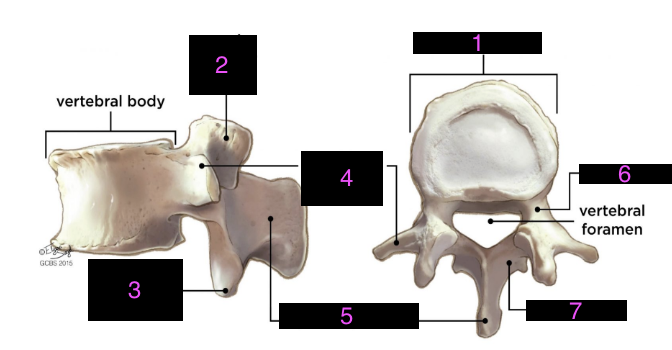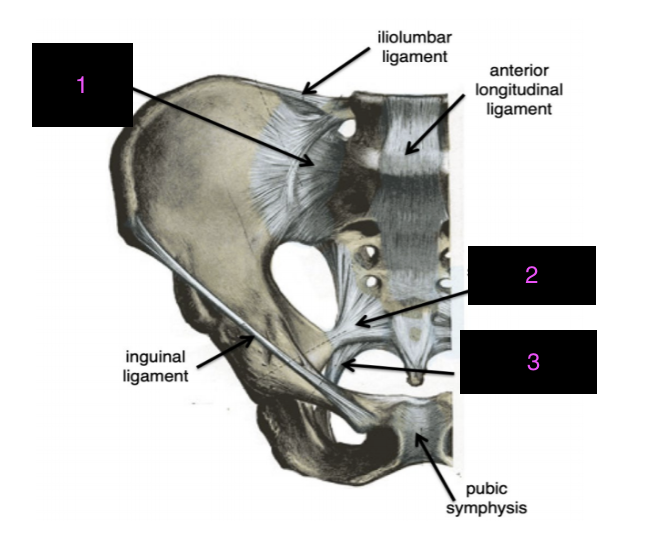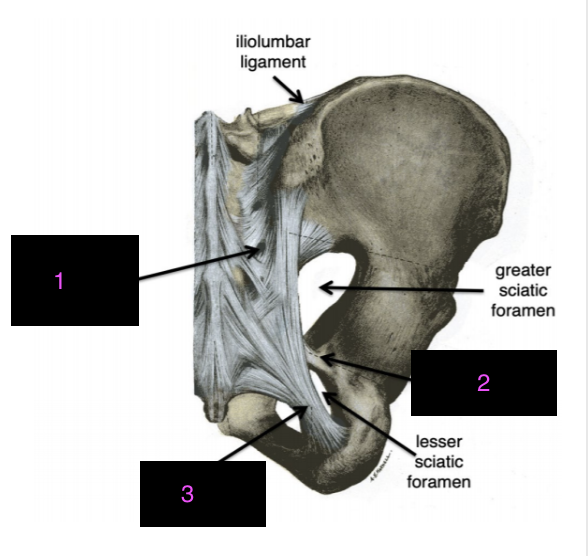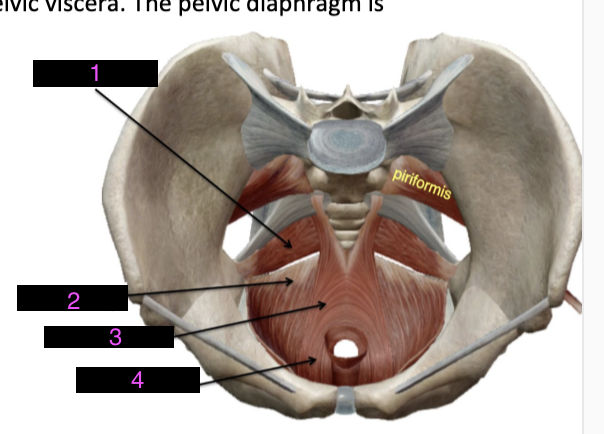Lumbar Spine Lab Manual
1/28
There's no tags or description
Looks like no tags are added yet.
Name | Mastery | Learn | Test | Matching | Spaced |
|---|
No study sessions yet.
29 Terms

name the numbered structures
1- vertebral body, 2-superior articular process, 3- inferior articular process, 4-transverse process, 5- spinous process, 6- pedicle, 7- lamina
all lumbar and thoracic vertebrae are considered ____
typical
there are ____ thoracic and ____lumbar vertbrae
12, 5
what direction do the spinous processes of the lumbar vertbrae project
almost directly posteriorly
defining factors of lumbar vertebrae
short and square spinous processes, large and kidney shaped vertebral bodies, triangular vertbral foramen
what is the plane of the facets in the lumbar spine? what motion does this promote?
sagittally from L1-L4 to allow more flexion, coronally at L5-S1 to allow more lateral motion
what is the plane of the facets in the thoracic spine? what motion does this promote?
coronal, promotes lateral flexion
defining features of thoracic vertebrae
long spinous processes that slope posteriorly/inferiorly over adjacent vertebrae, heart shaped vertebral bodies, circular/smaller foramen
what is the main function of the SI joint?
to provide stability and attenuate forces to the LEs
what plane does most motion at the SI joint occur in?
sagittal (nutation/ counternutation)
what 2 main ligaments support the SI jpoint?
anterior sacroiliac ligamant and posterior sacroiliac ligament
what are the 2 accessory ligaments of the SI joint? what is their main function?
sacrotuberous and sacrospinous ligaments, main function is to prevent rotation of the sacrum

name the labeled ligaments
1- anterior sacroiliac ligament, 2- sacrospinous ligamanet, 3- sacrotuberous ligament

name the labeled ligaments
1- posterior sacroiliac ligament, 2- sacrospinous ligament, 3- sacrotuberous ligament
what muscles make up the erector spinae group from lateral to medial?
iliocostalis, longissimus, spinalis
how many segments do semispinalis span?
4-6
how many segments do rotatores span?
1-2
how many segments do multifidus span?
2-4
what muscles make up the transversospinalis group?
semispinalis, rotatores, multifidus
generally speaking, where are the muscles of the transversospinalis group said to be located?
the bony gutter b/w the transverse and spinous processes
what muscles make up the segmental group (deepest layer of spinal muscles)
interspinale, intertransversarii, levatores costarum
how do the fibers of the external oblique run?
inferiorly and medially
how do the fibers of the internal oblique run?
upward and medially
how do the fibers of the transversus abdominus run?
medially in a horizontal orientation
what are the functions of the pelvic floor?
hold pelvic organs in place, provide support for abdominal viscera, maintain tone of pelvic cavity
what muscles make up the pelvic diaphragm which forms the floor of the pelvis?
levator ani and coccygeus
what are the 3 subdivisions of the levator ani?
puborectalis, pubococcygeus, iliococcygeus

label these muscles of the pelvic floor
1-coccygeus, 2- iliococcygeus, 3-pubococcygeus, 4-puborectalis
what muscles support thhe posterior and lateral walls of the pelvic cavity?
piriformis and obturator internus